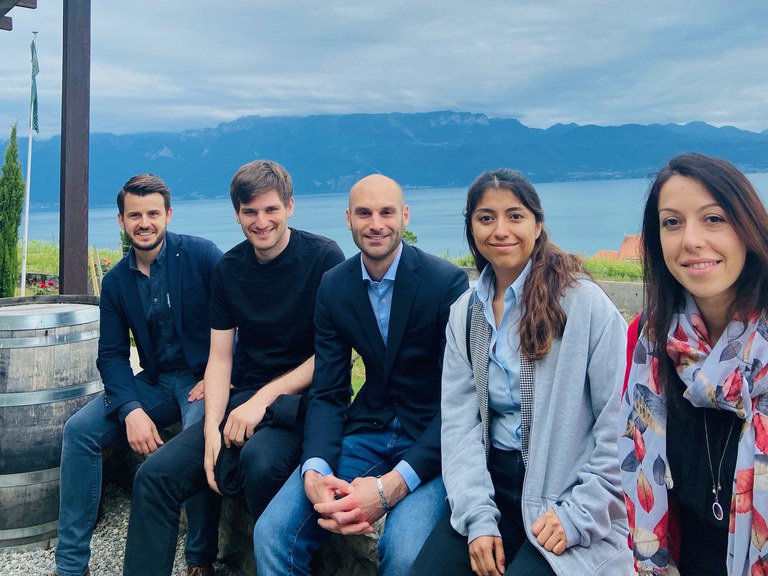
IMCS at the Contact Mechanics International Symposium 2022
3 Juni 2022
Computational Contact Mechanics is one of our main research topics at IMCS, where our activities span from micromechanical modeling to robust discretization schemes for large deformations in large-scale applications. From May 23rd to May 25th, part of the "Computational Simulation" group (Prof. Popp) took part in the 10th edition of the Contact Mechanics International Symposium (CMIS) hosted in Chexbres, Switzerland. The conference, held in presence after two years of the pandemic, allowed exchanging new ideas, creating new interactions between research communities, and strengthening existing collaborations in the quiet and beautiful location of Lake Geneva.
Prof. Alexander Popp presented: "Thermomechanical contact and friction with large deformations: Mortar method vs. Nitsche's method". The contribution compares two different types of finite element discretization schemes applied to thermomechanical contact problems with frictional sliding and large deformations: the mortar approach and Nitsche methods.
The Ph.D. candidate Dipl.-Ing. Ivo Steinbrecher presented his work: "Nonlinear finite element formulations for mixed-dimensional beam-to-solid interactions", a procedure for embedding 1D Cosserat continua into 3D solid volumes.
M.Sc. Eugenia Gabriela Loera Villeda gave a presentation titled "Coupling of NURBS boundary layer meshes with bulk finite element meshes using mortar methods". She presented the first algorithmic steps towards the coupling of a NURBS boundary layer mesh and a Cartesian finite element mesh using Embedded Mesh Methods.
Dr. Jacopo Bonari, currently visiting scientist at the institute, has also contributed to the conference program with the presentation "FEM formulation for fully coupled normal and tangential contact problems with complex interfaces", in which he presented a simplified approach for the solution of contact problems involving rough surfaces.
Dr. Maria Rosaria Marulli, former guest researcher at the institute, gave a presentation titled "Simulation of bio-inspired adhesives with mushroom-shaped microstructures", where novel results related to the numerical simulation of a new class of adhesives were shared with the audience.
To conclude the symposium, organizers and participants enjoyed a social gathering in a local vineyard and took dinner in the village of Lutry.






